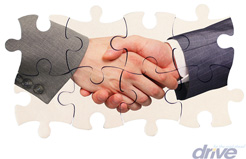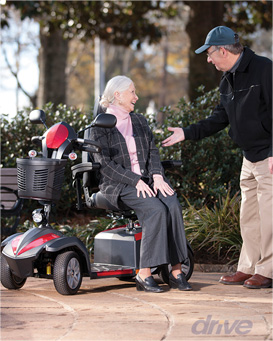Maximize Your Referrals: How
to Obtain a Client for Life
REQUEST A
CONSULTATION
Become your clients’ trusted partner, not just a provider of their Power Mobility Devices (PMDs), and you will increase your bottom line. Match the most effective PMD and accessories to their unique challenges, and you will build your referral business and earn loyal clients for life.

The leaders in any business environment are those who develop client relationships in which providers understand and identify their clients’ needs…sometimes even before the clients’ themselves. This is especially true for providers of Mobility Assistive Equipment, who can build these kinds of relationships by being experts in their product line; a product line their customers are often completely unfamiliar with. By becoming your clients’ expert advisor on all things related to home medical equipment, and power mobility products in particular, you can minimize complaints, returns and audit risk, maximize your clients’ satisfaction and your upselling opportunities, and position your business as a valuable, life-long resource for PMD equipment and accessories.

Matching the Client to the right PMD Product
The key to a successful partnership between client and provider is, literally, doing your homework. Providers should begin the product recommendation process with an in-depth understanding of each client's needs and limitations, gained through an upfront in-home assessment of the client, their MRADLs, and their environment. Complete and thorough physician’s/clinician’s documentation is the first step, followed by the full initial in-home assessment. Both steps will guide you to the right products for each client.
The in-home client assessment should ideally be done prior to recommending, ordering or delivering mobility assistive equipment in order to maximize client satisfaction and minimize complaints and returns. During this assessment, providers can observe the client’s living environment to determine if his or her mobility limitation significantly impairs their ability to participate in one or more Mobility-Related Activities of Daily Living (MRADLs) such as toileting, feeding, dressing, grooming, and bathing in customary locations in the home. Paying attention to a client’s dexterity and fatigue issues will help guide the process as well.
Providers should also key in to limitations of the home environment itself. Which PMDs will this client’s hallways and doorframes accommodate most easily? Will this client be using their PMD indoors only? Considering the client’s indoor and outdoor activities in selecting the device that will best be able to handle the intended use will not only better satisfy the client but will significantly reduce non-reimbursable service calls and repairs.
Change Necessitates Change
There have been major changes in PMD providers' business climate over the past decade. Medicare competitive bidding is now the norm. Audits and denials have increased significantly, while reimbursement amounts have decreased. A recent survey of claims in Medicare Region A showed a 70-75% denial rate in a single quarter for the most frequently used code, and an audit rate of almost 100%. The same data viewed over five years show a 64% drop in reimbursement dollars for that power chair code. Clearly, overutilization of a single product code has become harmful to your bottom line.
These changes in business environment point to the need for a change in providers' strategies. You can not only navigate, but benefit from these changes with a client-centric approach.
"Upcaring": Maximizing each referral
Part of successfully matching the product to the client includes pairing the scooter or power chair to the appropriate accessories. Accessories add functionality and versatility to power wheelchairs and can be great items for cash sales. Some of these items are also billable through Medicare. Either way, combining the right accessories with a higher reimbursement chair can significantly boost profit. Also note that several components that are included with a power chair are reimbursable as separate items.
Tuning in to the client, their MRADLs and their living environment will give the astute provider the opportunity to identify areas of need beyond the PMD that could be aided with additional home medical accessories. Are there safety bars in the bathrooms? Could the client benefit from any other devices in the provider’s product line? Be sure to document these observations in writing and with photos to support product recommendations and minimize audit risk. Identifying and supplying the right products to help clients overcome their individual challenges offers them a better overall experience, enhances their quality of life, and builds their trust in you as their advisor and provider. When clients’ medical mobility needs are left unrecognized and unmet, it often falls to the client or their family members to research and purchase additional items and accessories on their own, creating missed revenue and relationship-building opportunities for the provider. At the same time, your role as product to client “matchmaker” minimizes your audit risk by diversifying product codes, and maximizes profit with more highly reimbursable PMD products. Truly, a win-win outcome for clients and providers.

